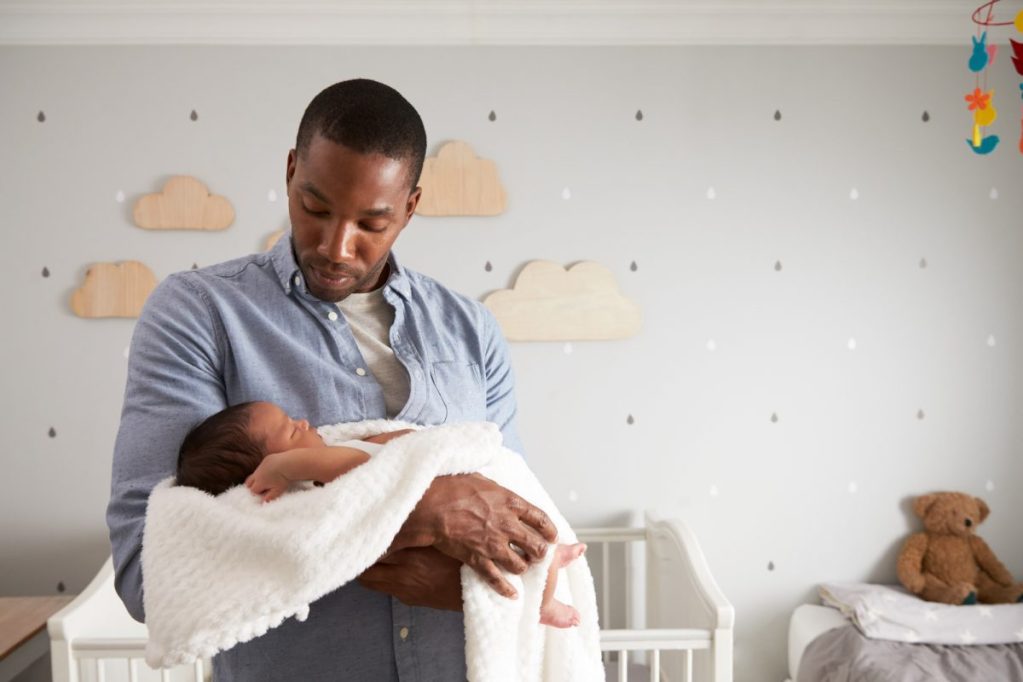Even if you think you’re ready for a newborn to take over your life, nothing prepares you for the lack of sleep and trying to establish a sleep routine. After a few restless nights, parents will try anything to get their little bundle of joy to realize how lovely sleep is. If you need a hand putting your baby down to bed at night, here are the sleep training methods all parents need to know.
The more extreme sleep training methods

These are a little more on the controversial side, but they are recognized sleep training methods.
Cry-it-out method
One of the most controversial sleep training methods is the cry-it-out method, which might be the hardest on parents. You put your child to bed as you normally would and do not, for any reason, go back into their room. If your child still takes a night feeding, you feed the baby and get right back out of the room. Experts don’t even agree about if and when it’s OK to go in and comfort the baby.
Chair method
The chair method is also a little controversial because it is like the cry-it-out method, except the parent is sitting in the room. You put a chair next to the crib and sit in it to comfort the baby. Once your little one is asleep, you leave. If the baby starts to cry or wakes up, you go to the chair while they fall back asleep. Each night, you move the chair a little further away from the crib. You don’t pick the baby up, pat them, or do anything to soothe them but sit in the room with them.
Fading methods

Taking your sleep routine and reducing parts is a gentle way to train your baby to sleep.
Bedtime hour fading
Getting a baby to sleep when you want them to is an earned skill set. The bedtime hour-fading sleeping method could help get you there. You will need to watch the clock for this sleep training method. If your child tends to finally fall asleep by 9 p.m., but you want them to sleep by 7:30 p.m., bedtime fading is what you should try.
You first need to find out what time your child falls asleep, paying attention to how long it takes them to doze off. Then, you scooch bedtime back by the amount it takes the baby to fall asleep. If it takes them 20 minutes the first night, the next night, put them down at 8:40, the next night at 8:20, and so on, until you reach the bedtime you’d like for your baby. This one takes time and patience.
Bedtime routine fading
Sometimes, bedtime feels like it takes three to five business days to complete. While that doesn’t change as your child gets older (toddlers are a whole breed), a bedtime fading routine is a gentle sleep training method for your baby. Whatever your normal routine is, you slowly fade out the time you spend on each part. If you rock your baby for 30 minutes before putting them in the crib, you will shorten that time each night. If your bedtime routine takes well over an hour, you should have it down to a reasonable time for your family.
Other sleep training methods

These are the more well-known sleep training methods to get your tiny human to sleep.
Pick-up, put-down, and pat method
The pick-up, put-down, and pat method is a gentle sleep training method in which the parent is there for the baby when needed but doesn’t immediately pick them up the second they make noise. The parent stays in the room for a bit to make sure the baby is asleep, and if there is any fussing, the parent waits a bit to see if the baby goes back to sleep.
If not, the parent could pick up the baby to soothe them or pat their back or tummy to settle them back down. This one takes some time and getting used to your baby’s cues, but it is a softer way to sleep train.
The Ferber Method
There are many nicknames for this one, but the Ferber Method is the one where you don’t pick the child back up after you put them in the crib. Whether the baby is asleep or not, quiet or not, you put them in their crib at bedtime and leave the room. Parents pick a set interval, say 15 minutes, and can reenter the room and check on the baby then. Parents can comfort and soothe a fussy babe without picking them up. Talking, singing, patting, rubbing, and anything else you want to do while the baby stays in the crib is fair game.
The whole house turns into a zombie if the baby isn’t sleeping. Even if you have had a newborn before, each baby wants to be put to bed their own way. Keep these sleep training methods in mind, no matter if it’s your first or third baby, because you never know which one will work with which child. Try one, try three, or create a personal mix for your child, but get the whole house to bed on time with these sleep training methods.




